1960
A newly recruited team of biologists, histologists, and
parasitologists begin a long-term study of diseases, including MSX,
of molluscs at the Oxford Laboratory.
The nation's first saltwater sport fish lab is established by
BSFW at Sandy Hook, NJ. Dr. Lionel Walford is its first director.
The Boston Technology Lab is moved to Gloucester.
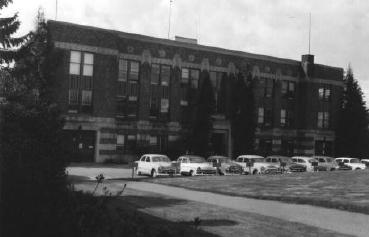 Seattle Technological Laboratory
Seattle Technological Laboratory
Research at the BCF Seattle Technological Laboratory on composition
and taste of various sharks finds wide variability in palatability
between shark species.
The Bureau s northern fur seal and whale research studies are combined
in Seattle and designated as the Marine Mammal Biological Laboratory.
The Auke Bay
Laboratory near Juneau opens to house the Alaska fisheries research programs.
The Pacific Northwest trawl fleet begins catching bottom fish off Washington on grounds newly discovered by the BCF research vessel John M
Cobb.
In February, the Honolulu
Biological Laboratory makes the first
successful transfer of skipjack tuna from the sea to a holding pool
ashore; it is the first time that oceanic skipjack have been held for
more than a few hours or have been induced to feed. In addition,
albacore, bigeye, and bluefin tuna larvae, previously unknown, are
tentatively identified, opening the way for studies of their seasonal
and geographical distribution and abundance throughout the Pacific.
The Galveston Biological
Laboratory announces significant advances in
identifing specific penaeid shnmp larvae; early larvae derived from
known parents were obtained for three species and comparable results
are anticipated for several other species.
Bureau researchers discover extensive calico scallop fishing grounds
over a 1,200-square-mile area off the Florida coast. Also 1,000,000
pounds of hard clams are taken by commercial vessels from a new bed
discovered last year by Bureau scientists off North Carolina.
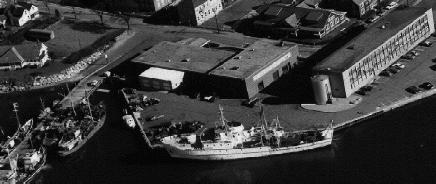 The New Woods Hole Lab
The New Woods Hole Lab
Woods Hole lab is completely reopened in the new buildings.
Spring dedication ceremonies open the Bureau's new Technological Laboratory in Gloucester, Mass.
Researchers at Woods Hole find that oysters suspended from rafts on
cultch strings reach commercial size in less than half the time needed
by bottom-grown stock in the same areas, and mortalities are less than
one-fourth of those grown under usual industry practices.
A milestone in Great Lakes sea
lamprey control is achieved with the
chemical treatment of all lamprey-producing streams feeding Lake
Superior. Treatment of Lake Michigan and Lake Huron streams to
eradicate lampreys begins in cooperation with the Fisheries Research
Board of Canada.
Bureau chemists demostrate the use of thin layer chromotography for
isolating and characterizing chemical classes of lipid compounds in
fish oils, a new basic test procedure for chemical laboratories.
An Alaska fisheries exploration and gear research program is initiated,
based at Juneau. Also, the use of radioactive materials in biological
research is new, and a radiobiological consultant is assigned to the
BCF Central Office to advise Bureau laboratories on use of radioactive
materials in biological research.
1961
Between Feb. and April, more than 220,000 inches of newspaper food column
space are devoted to fish topics, of which one-third is based on the
Bureau's consumer education releases to food editors.
Serological studies of the Pacific sardine show that there is a
genetically distinct stock in the Gulf of California, the third
sardine subpopulation to be found in the eastern Pacific.
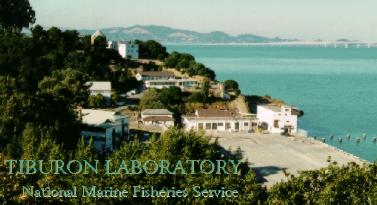 The Bureau establishes the Tiburon
Marine Laboratory near San
Francisco, Calif., to conduct research on migratory gamefishes.
The Bureau establishes the Tiburon
Marine Laboratory near San
Francisco, Calif., to conduct research on migratory gamefishes.
The Bureau's Biological Laboratory in Honolulu develops a new method
for predicting the seasonal catch of skipjack tuna for the Hawaiian
Islands based on the time of zero rate of temperature change of the
ocean climate--the time and rate of warming and salinity change
occurring during late February and early March of each year.
Exploratory research locates promising fishing grounds off North and
South Carolina for vermillion snapper, grouper and scup.
The BCF research vessel Delaware tests
the effectiveness of trawls with various parts made of polypropylene,
finding these new nets to be more efficient than the standard manila
trawls.
The first comprehensive program to study juvenile salmonid migrants in
the Columbia and Snake Rivers is initiated.
Bureau research into the drastic declines of Lake Erie blue pike and
walley produces evidence of marked environmental changes, including
increases of chemicals related to domestic and industrial wastes.
Severe oxygen depletion is found over thousands of square miles of
the lake along with dramatic changes in the abundance of fish-food
organisms livinq on the bottom.
Bureau researchers develop new analytical techniques to produce
better fish oil fractions and devise new methods to determine rapidly
the chemical components of such fractions.
The new Bureau-produced film "Fishing the Five Great Lakes" makes 20
such educational films in national distribution. Since 1946, the
Bureau's educational motion pictures have earned 18 national and
international film festival awards.
The Bureau begins a major study of the manufacture of fish protein
concentrate (FPC), a fine powder containing essential amino acids,
minerals, and vitamins necessary for human health. The FPC is viewed
worldwide as a potential human dietary supplement that could combat
world hunger while creating a use for under or non-utilized fishes.
In response to increasing numbers of foreign vessels fishing along U.S.
coasts, the Bureau increases its surveillance efforts to ascertain
possible effects on U.S. fisheries.
On August 30th, Congress authorizes construction at Milford, Conn., of
a shellfish laboratory for research and training.
The Bureau's new 65-foot exploratory fishing and gear research vessel
Kaho is commissioned in late October and based at Saugatuck, Mich., for
Great Lakes studies.
1962
Victor Loosanoff, the first station director, moves from the Milford
laboratory to the Tiburon Lab where he stayed until his retirement.
The next laboratory director, Dr. James Hanks, stays with the service
in that capacity until 1984.
Congress approves a marine geology program for the USGS, and a
five-year geological survey of the continental shelf and slope between
the U.S./Canada border in the north and the tip of Florida on the
south. Although the focus of the study is marine geology and
topography, scientists at Woods Hole process the benthic samples taken
in this project for biological specimens. This is the first and last
large-scale baseline benthic survey conducted in the U.S. Atlantic.
Formar BCF biologist/writer/editor Rachel Carson publishes her landmark
environmental book "Silent Spring," drawing in part on BCF and other
Federal and university studies on pesticides like DDT.
The George B. Kelez is acquired for the Seattle Laboratory from the
U.S. Navy, and for the first time it allows the Bureau's oceanographic
and high-seas salmon studies to be extended into the winter season.
A new fishery for royal red shrimp begins off Florida's east coast
and in the Gulf of Mexico, and 19 commercial trawlers are converted
for it within the year. Bureau explorations first discovered the
deepwater shrimp grounds in 1956.
 An active commercial fishery for snow crab develops in southeastern
Alaska waters as a result of Bureau explorations.
An active commercial fishery for snow crab develops in southeastern
Alaska waters as a result of Bureau explorations.
Congress, on October 9th, authorizes $10 million for construction and
operation of the "National Fisheries Center and Aquarium" in
Washington, D.C., for fisheries research and displays.
The Bureau's foreign fishery reporting program expands, receiving
regular fishery reports from about 90 U.S. embassies and consulates
and the three full-time fishery attaches in Copenhagen, Tokyo, and
Mexico City.
The Bureau makes it's first whale marking and observation cruise off
southern California and northern Baja California to determine the
condition of the North Pacific whale stocks and those pursued by the
two U.S. whaling companies.
A 2-year emergency Alaska salmon research program concludes, having
determined the carrying capacity of the freshwater spawning and nursery
areas of the state, with a better understanding of the Pacific salmon
runs and their management, and with data needed for renegotiation
of the International North Pacific Fisheries Convention in 1963.
The Bureau's first winter high-seas salmon survey cruise in the North
Pacific finds a significant concentration of immature red salmon in a
broad area about 200 miles south of Kodiak Island and helps toward
understanding the distribution and survival of salmon at sea. Methods
are also developed to distinguish between North American and Asian pink
salmon.
Bureau scientists at the La Jolla
Laboratory studying the early
development of fishes use a temperature-gradient block to study the
development of one group of fish eggs at 18 diHerent temperatures simultaneously.
The new Biological Laboratory at Woods Hole, Mass., is dedicated on
June 23nd. The 3-story building has 24,000 square feet of floor space
devoted to wet laboratories, as well as other laboratories, offices,
a scientific library, and a conference room. A second building houses
maintenance facilities and an aquarium.
Several insurance underwriters offer a 5% reduction in protection and
indemnity insurance premiums for all New England fishing vessels that
install new trawl wire level-winders on the main winches of the vessels
as a result of the Bureau s fishing vessel safety program.
A new 187-foot research vessel, the Albatross IV, is delivered to the
Woods Hole Laboratory in November; a contract is also awardad for
another new 158-foot vessel to be named the Townsend Cromwell for use
in the central Pacific.
New shellfish genetics research begins at the Bureau's Milford Conn.
Biological Laboratory, and the goal is to produce strains of
oysters and clams with better growth ratas, disease resistance, and
market qualities.
1963
The cooperative shark tagging program of the NEFC begins, with about a
dozen volunteer taggers. Today the program has several thousand
volunteers worldwide and is the source of most of the data collected on
the migration, reproduction, growth, longevity, and exploitation in the
Atlantic.
 Russians Welcomed to Woods Hole
Russians Welcomed to Woods Hole
1963-1977--The era of aggressive prosecution of fisheries by
factory trawlers in the NW Atlantic and an equally active era for
the cooperative research projects between NEFSC scientists and
those of the other nations involved in ICNAF. During this period,
NEFSC staff took part in more than 200 at-sea research projects, on
40 different vessels, representing 8 nations.
The NEFC autumn bottom trawl surveys begin. These are the
source of the longest continuous time series of marine research
vessel sampling data in the world. For the finfish survey, about
300 sites are randomly chosen in waters 2 to 200 fathoms deep off
the NE U.S. from the Gulf of Maine to Cape Hatteras. Spring
surveys are added in 1968.
Groundbreaking ceremony is held for the new BCF Fishery-Oceanography
Center in La Jolla. Calif.
The 565-ton Townsend
Cromwell. a 158-foot reseanch vessel, is
completed. It has a top speed of 13.5 knots, a 10,000- mile cruising
range, and can perfomm a wide variety of scientific missions anywhere
in the world s oceans and under most severe weather and sea condions
U.S. biologists are placed on some Japanese trawlers and factory ships
in the Bering Sea and the Gulf of Alaska, obtaining data on the catch
by species, area, and quantity, and on gear efficiency.
Bureau sciantists confirm the successful use of tetracycline
antibiotic marking of fishes with marked adult silver salmon returning
in the fall to the Clatskanie Hatchery on the lower Columbia River
Gulf gear research demonstrates that electrified trawl net can
significantly improve the efficiency of commercial shrimp trawling
methods.
Bureau analyses of Atlantic coast shore-station sea-surface temperature
records show a warming trend which started near the turn of the century
and reached a peak in the early 1950 s
Use of a chemical toxicant in Lake Suerior streams reduces lampreys
there by over 80%, bringing a substantial increase in the average
size, survival, and spawning populations of lake trout.
The Bureau participates in two international oceanographic
expeditions: The International Indian Ocean Expedition (IIOE) and the
International Cooperative Investigations of the Tropical Atlantic
(ICITA).
Over 215 million pounds of fishery products are inspected and certified
by Federal inspectors in 17 states nationwide. Since 1956, the Bureau
has developed grade standards for 14 fishery products upon which
the inspections and certifications are based.
Research programs to prevent botulism in smoked fish and salmonella
are initiated when several consumers are stricken by those
microorganisms.
1964
Construction begins on a new laboratory at Milford, CT. The staff
occupies the new station in 1967.
The new fishery-oceanography center in La Jolla, Calif., is dedicated
on October 31st. BCF s CCRL and Tuna Research Laboratory, along with
the Inter-American Tropical Tuna commission (IATTC), STOR, the CalCOFI
Coordinator, and U.S. Geological Survey (USGS) field station per-
sonell move into the new facility.
The BCF s Seattle Technological Laboratory initiates research on the
Pacific whiting, then called hake, another potentially large
fishery.
The Bartlett Act, Public Law 88-308, of May 20th, prohibits fishing in
U.S. territorial waters by foreign-flag vessels unless allowed by
treaty. Pre-MFCMA (1976) territorial waters were within 3 miles along
most US coastlines.
Scientists at the Bureau's Seattle Biological Laboratory use the
results of pioneering studies in serology, or blood group analysis,
to identify several subpopulations of salmon in the eastern North Pacific Ocean.
A new MPDI (Marine Products Development Irradiator) is dedicated at
the Bureau's Technological Laboratory in Gloucester, Mass. By
processing up to 1 ton of fish per hour at 250,000 rads, scientists
can study the extension of seafood shelf life by using radioisotopes to
destroy the bacteria that cause food spoilage.
The first coastwide samples from the Gulf of Mexico menhaden reduction
fishery are acquired, and sampling is continued through the next 31
years.
1965
Sandy Hook sportfish biologists begin long-term investigations into egg
and larval fish surveys, red tide, and behavior of adult blue fish
Regular surf
clam and ocean
quahog surveys begin at tha Woods Hole
Laboratory, providing a continuous time series of species information
comparable to that supplied by the finfish survey sampling program
since 1963.
After completing a BCF charter, the St. Michael fishes Pacific whiting
successfully in Puget Sound, Wash., taking about 100 tons in 13 tows;
it is the first commercial fishing operation for this species in the
North Pacific area and the beginning of a new regional fishing
industry.
For the first time in a laboratory, blue king crab,Paralithodes
platypus, are raised from the egg through four zoeal stages and one
glaucothoe larval stage.
Seattle Biological Laboratory scientists find scale characters useful
in distinguishing Asian from Bristol Bay, Alaska, sockeye salmon,
and for identifying stocks of intermingled salmon in the Gulf of Alaska
from various North Amencan river systems. Pink salmon are also
identified to their area of origin by scales.
The Biological Laboratory at Gulf Breeze, Fla., establishes a
cooperative nationwide system to monitor nearly a dozen organochlorine
pesticides using monthly analyses of clam, mussel, and oyster samples
from 150 coastal stations.
An ecological benchmark of the distribution and abundance of
groundfish on New England banks is completed, based on 3 years of
intensive surveys with Bureau vessels.
The Bureau's comprehensive systematic and anatomical study of the
giant tunas, genus Thunnus, is completed, and a study on systematics
and distribution of sharks continues.
The Milford, Conn., Biological Laboratory begins a long-term study of
the genetics of commercial mollusks aimed at hybridization and
selective breeding.
The Honolulu Biologicat Laboratory establishes a sampling station on
Palau for studies on the substantial skipjack tuna fishery in the Trust
Territories of the Pacific Islands.
The Anadromous Fish Conservation Act is passed to conserve, develop,
and enhance anadromous fisheries covered under international agreements
and the fisheries of the Great Lakes and Lake Champlain,
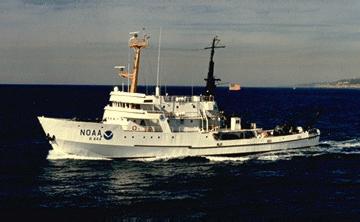 RV David Starr Jordan
RV David Starr Jordan
The 171-foot RV David Starr Jordan, a new BCF research vessel, replaces
the 35-year-old, 150-loot Black Douglas at the La Jolla, Calif.,
research center
With an increase in the fishery demonstrated, California legalizes
the taking of anchovies for meal and oil. The Bureau's research
laboratory in La Jolta, Calif., shifts emphasis from sardines to
anchovy.
1966
Sandy Hook staff begin studies of experimental reef fisheries
The BSFW establishes a laboratory at Narragansett, RI to take
on the gamefish responsibilities of the Sandy Hook laboratory,
which began to concentrate more on habitat and environment
A new law passed on November 2nd authorizes the development of economical processes for producing fish protein concentrate from unutilized
and underutilized species of fish
Congress recognizes the need for a comprehensive, long-range
oceanography program and passes the Marine Resources and Engineering
Development Act of 1966 (MAREDA) which sets up a National Council at
the Secretarial level with a 15-member Commission. Later, Congress
amends the MAREDA with the
Naltional Sea Grant
College and Program Act
of 1966.
Congress passes Public Law 89-658, extending the U.S. fisheries zone 9
miles beyond the 3-mile territorial sea, making a full 12-mile zone in
which the United States will exercise the same exclusive rights in
respect to fisheries as it has in its territorial sea. This is in
response to the increased foreign fishing activity off the U.S.
coasts.
Scientists with the Ketchikan Technological Laboratory discover a new
method for peeling Alaska's pink shrimp quickly and maintaining their
quality and color, thus overcoming a major obstacle to commercial
production.
A biologist at the Auke Bay, Alaska, Biological Laboratory devises a
new type of lightweight, simple, and inexpensive plastic driftcard to
chart surface ocean currents. A patent on it is secured for the
Bureau.
Bureau and contract personnel create a new model sonic tag to place
inside fish. Tests on adult chinook salmon and steelhead trout at
the Bonneville Field Station are positive.
The Bureau's California Current Resources Laboratory in La Jolla rears
Pacific mackerel and sardines from the egg to an advanced juvenile
stage in its expermental seawater aquarium.
The Honolulu Biological Laboratory completes the "Oceanoqraphic Atlas
of the Pacific Ocean," providing a definitive summany of data from more
than 50,000 oceanographic stations taken by various agencies between
1917 and 1964. It also describes the environment of every known and
potential fishery resource of the Pacific Ocean.
The Honolulu scientists also develop evidence leading to the
identification of one of the last large untouched tuna resources in
the world in the Central Pacific Ocean, an intermediate size group,
only a small portion of which is fished from Hawaii.
Bureau marketing personnel introduce such underutilized Gulf of Mexico
species as mullet, Spanish mackerel, calico scallops, and soft clams
to restaurant chains, state school lunch programs, and state
institutions.
The Bureau's Environmental Oceanic Research Program in Washington,
D.C., completes detailed bottom topographic mapping of the Middle
Atlantic Continental Shelf and arranges for publication of the maps by
the U.S. Coast and Geodetic Survey.
The first commercial shellfish hatchery opens on the Pacific coast it
and nine other private shellfish farms use data and techniques derived
from research at the Bureau's Milford, Conn., Biological Laboratory.
A large study is completed into conditions causing drastic changes
since 1900 in fish populations in Lake Michigan. Important factors
include high fishing intensity and the explosive increase in the sea
lamprey population in the 1940 s.
In promoting fishery products, Bureau efforts produce over 74,000
column inches of space in newspapers and magazines with a total
readership of over 300 million subscribers or purchasers. In addition,
Bureau home economists develop and test 633 recipes during the year for
consumers, as well as for institutional, school lunch, and restaurant
use.
A new cooperative study is begun on the northern anchovy on the Pacific
coast to assess the species abundance, distribution of various life
stages, and rates of fecundity and mortality, to facilitate its
conservation,
Programs at the Bureau s Biological Laboratories at Galveston, Tex.,
and Pascagoula, Miss., help deterimine the feasibility of using crewed
spacecraft to obtain natural resource infommation. Particular
emphasis is on determination of sea surface temperatures, current
patterns, sea state, shoaling processes, bioluminescence, and
productivity. Sensing devices being tested employ photography, radar,
infrared, Passive microwave, and spectroscopy.
The Fur Seal Act is passed to protect the fur seal herd and administer
the Pribilof Islands in the Bering Sea.
The Jellyfish Act is passed to protect fish and shellfish resources in
coastal water, promote water-based recreation, and to control and
eliminate jellyfish and other aquatic pests.
1967
Dr. Bruce B. Collette (with R.H. Gibbs) of the National
Systematics Laboratory publishes a benchmark work on the
comparative anatomy and systematics of tunas.

A campaigning Hubert H. Humphrey visits the Woods Hole
facility, with Sen. Edward Kennedy, for a full-press walk-about.
1967-1972--Beginning of the era of ecologically-based fisheries
research and management in the Northeast.
On January 9th President Lyndon B. Johnson appoints the 15 members of
the Stratton Commission who immediately begin their study of the
Nation's marine problems and needs.
Two southwest laboratories (CCRL and the Tuna Research Laboratory) are
merged into one and the director, Alan Longhurst, also becomes
EASTROPAC (Eastern Tropical Pacific) Director and launches the 4-year
expeditionary EASTROPAC program which seeks to learn the distribution
and abundance of skipjack tuna resources and to understand how fish
distribution is related to the oceanography of the eastern tropical
Pacific.
The Sandy Hook Laboratory begins studies of natural and artificial
marine reefs which lead to several national and regional programs to
create new artificial reef habitat.
A new $3 million 215-foot ocean research vessel, the Miller Freeman,
is launched and it is designed with laboratories and equipment
especially for North Pacific oceanographic and fisheries studies. In
addition, several field stations are established on the Columbia
River and Puget Sound.
A salmon aquaculture program is established at the Bureau's Seattle
Laboratory, with a field station at Manchester, Wash., on Puget Sound.
The station soon demonstrates the rapid growth of coho salmon in salt-
water rearing pens from 0.3 ounces to a marketable 8-ounce size in just
6 months.
Studying immersion freezing of fish, the Bureau's Technological
Laboratory at Terminal Island, Calif., finds that Freon 12 effectively
preserves and maintains tuna quality and that residual levels of Freon
12 are low. Propylene glycot is also studied as a freezing agent.
Rearing of pelagic fish larvae, a problem for over a century, is
improved at the Bureau s Fishery-Oceanography Center in La Jolla,
Calif., where sardine, anchovy, Pacific mackerel, and more than 20
other species are reared from egg to advanced juvenile or to adult
stages.
Catfish culture production, which grew from just a few thousand pounds
in 1963 to 15 million pounds in 1965, gets new impetus from the Bureau
s cooperative technical assistanca project which helps finance a
technical assistance program for the industry in nine U.S. south
central states.
Biological studies begin on the culture of four shrimp species which
have been hatched and reared to postlarvae in the Bureau's Galveston,
Tex., Biological Laboratory.
Biological data acquired by scientists at the Bureau s Biological
Laboratory at St. Petersburg, Fla., aids in obtaining the first denial
of a dredge-fill permit by the Corps of Engineers owing to the effect
upon living resources and based on provisions of the Fish and
Wildlife Coordination act.
The Bureau and three Gulf states begin an inventory of estuarine
resources under the auspices of the Gulf States Marine Fisheries
Commission.
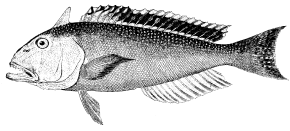
Tilefish
The Oregon II replaces the Oregon as the research vessel at the
Pascagoula, Miss., laboratory. It discovers new stocks of northern
tilefish in the Gulf of Mexico which average 6-6 pounds--the first evidence of
commercial concentrations of mature tilefish in the region.
A series of cooperative U.S.-U.S.S.R. fishery surveys are conducted in
the Middle Atlantic Bight to provide a common base to estimate stock
abundance and manage the harvests. Participating are the Bureau's
vessel Albatross IV and a Russian vessel likewise named Albatross.
Efforts by the Bureau and coagencies to control the predatory prey in
the Great Lakes shows progress: Lake trout populations Superior
increase almost 35 percent over 1960 levels.
Experiments at Bureau Technlogical Laboratories in Seattle, Wash., and
Ann Arbor, Mich., show that the shelf life of perishable foodstuffs can
be increased by placing them in gaseous environments that inhibit
growth of spoilage organisma Different ratios of the gases CO2 O2 and
N2 have been tested alone and in combination with irradiation.
A new program at the Honolu labratory is designed to increase the yeild
and efficiency of the pole-and-line fisery for skipjack tuna as well as
the efficency of the Hawaiian longline fishery. Efforts are also under
way to develop fisheries for high-seas skipjack tuna and for fish and
shellfish other than tunas.
1968
Sandy Hook staff begin a special investigation to evaluate
the effects on marine life of oceanic
disposal of
sewage sludge.
Journalists dub the study area "the Dead Sea."
Two new research units are established at Seattle's Montlake Lab to
study the physiology and biocheistry fish and the effect of thermal and
petroleum products (and other environmental contaminantsl on fish.)
During spring and summer, exploratory BCF fishing demonstrates the
feasibility of using large steel pots to catch offshore New England
lobsters in deep water, stimulating commercial fishermen to enter the
fishery.
A contract is awarded in October to build a demonstration FPC plant in
Aerdeen, Wash., to show the commercial feasibility of FPC and to get
operating and cost data for such an operation,
Scientists at the Seattle Technological Laboratory modify a
refrigerated brine technique used to freeze tuna by incorporating
dissolved CO2 in it. The new technique increases the shelf-life of
samon by 10-18 days because the CO2 inibits bacterial qrowth.
BCF and Japanese scientists cooperatively study several U.S. fish
species as potential ingredients for surimi, a frozen fish product used
in Japan to make fish sausages and fish cakes. Studied are the spiny
dogfish, starry flounder, and several Pacific coast rockfishes.
Seattle Technological Laboratory researchers demonstrate that
otherwise wasted proteins can be inexpensively and simply recovered
from diluted solutions in processing plant effluents. Comparative
feeding tests (protein efficiency ratio) indicate that the nutritive
value of the complexed protein is about equal to the value of the
noncomplexed protiein.
Honolulu Biological Laboratory researchers show that skipjack tuna of
the western Pacific (which forms Japan's largest tuna fishery) differ
genetically from those of the eastern and central Pacific, with the
dividing line at about long. 155 deg. E near Marcuis Island. The discovery
is based on chemical analyses of the tuna's blood systems.
The Pascagoula Technology Laboratory removes a roadblock to the
marketing of snapper fillets: A newly devised chemical treatment with
TDP and cryovac packaging prevents fillet and skin discoloration and
curling during cooking.
Scientists at the BCF Beaufort Biological Laboratory conduct what is
believed to be the largest fish tagging program in the world, tagging
more than 844,000 menhaden in five areas off the Atlantic coast. The
93,000 recovered tags provide much information on the species
migrations.
Scientists with the Gloucester Technological Laboratory conceive and
benchtest a simple oyster-shucking procedure using microwave heating
to open the shells. The technique later shows a 50% increase in
shucking productivity without reduction in total meat vields.
The Gloucester Laboratory also discovers that the characteristic
iodine flavor of the ocean quahog can be removed by several washings,
allowing the species to be used in such products as chowders or clam
puffs.
1969
Gloucester laboratory begins pioneering study of fish
irradiation as a method of extending shelflife
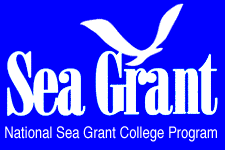
The Stratton Commission presents its final report on January 11th and
recommends creation of a new Federal entity-a National Oceanic and
Atmospheric Agency to include initially the BCF and other Federal
marine and anadromous fishery functions, the National Sea Grant College
Program, and other agencies.
The first rearing of larval tunas beyond the yolk-sac stage from eggs
collected in the ocean is reported by BCF scientists at the Tropical
Atlantic Biological Laboratory at Virginia Key, Fla.
Fish schools are first counted and measured by sonar off California
from the BCF's research vessel David Starr Jordan.
Three BCF diver-scientists participate with the U.S. Navy, NASA, and
other diver-scientists in the new TEKTITE I project, spending 60
consecutive days on the ocean floor at a 50-foot depth.
Scientists at the Seattle Biological Laboratory provide estimates of
growth, morality, and other data for Pacific whiting and Pacific ocean
perch; this research forms the basis for the U.S. position in
discussions with the U.S.S.R. to reduce its whiting fishery.
Auke Bay Laboratory scientists provide U.S. negotiators and management
agencies with background data on king crabs in the Bering Sea and
Gulf of Alaska. The data help U.S. representatives obtain a 48%
reduction in the king crab quotas of Japan and the U.S.S.R.
The Honolulu Biological Laboratory successfully tests another baitfish
the freshwater threadfin shad, to replace the native nehu. This shad is
as effective as the nehu in the skipjack fishery and survives better
in baitwells.
Honolulu Biological Laboratory researchers track a small tuna with an
ultrasonic transmitter and find that it traveled farther at night than
in daylight and was always at the surface at night-leading to the
possibility of developing a night tuna fishery.
Artificial mid-water pup-tent-shaped structures placed off Panama City,
Fla., in July attract commercial quantities of round scad, scaled
sardines, and Spanish sardines as much as 25 tons of fish--and
consistently attracting 0.5-5.0 tons daily.
The New England haddock decline since 1966, due partly to heavy Soviet
fishing, is accurately predicted by BCF scientists who have studied the
fishery since 1931.
A new Remote Underwater Fisheries Assessment System (RUFAS) is developed by the Pascagoula Laboratory as a remotely controlled underwater
sled equipped with television and motion picture cameras which can be
towed at varying depths.
For the first time ever, tuna eggs, collected at sea, are hatched in
a laboratory and the young survive about 3 weeks.
href="http://www.sefsc.noaa.gMiami Biological
Laboratory staff collected the eggs from a sample of mixed plankton
from nearby waters.
Scientists at the Ann Arbor Biological Laboratory provide data on fish
contamination that lead to banning or reducing the use of DDT in some
states adjacent to the Great Lakes. The studies also show that the
ordinary preparation of fillets of fish such as perch produces an
edible product well within safe tolerance limits.
The Bureau establishes a small environmental forecasting unit of the
U.S. Navy's Fleet Numerical Weather Center in Monterey, Calif., to
identify the part of the Navy's vast oceanographic and meteorological
data that can be used for related fisheries oceanographic forecasting.
The Bureau and the University of California study 175 female northern
fur seals found at San Miguel Island, Calif.--the first confirmed
record of these seals breeding on other than the Pribilof Islands.
The first meeting of the International Commission for the Conservation
of Atlantic Tunas (ICCAT) is held in Rome, Italy, beginning a period
ot U.S.-foreign cooperation in research on important oceanic
fisheries.

Home